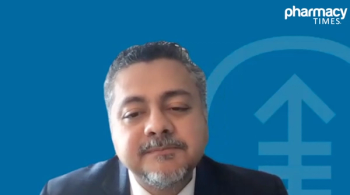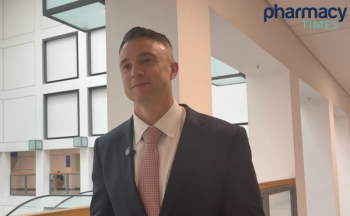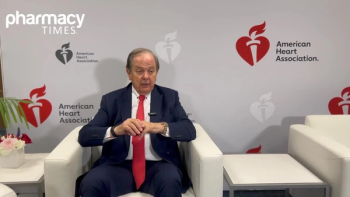
Videos




Key takeaways about unit-based pharmacy models for pharmacists and institutions.

Shivang Joshi, MD, MPH, RPh, FAHS, highlights Symbravo’s non-substitutability, multi-mechanistic design, and key safety considerations for pharmacists across care settings.

Expert pharmacists discuss future outlooks for unit-based pharmacy models.

New findings reveal a modest overall survival benefit of abemaciclib in early breast cancer, highlighting the importance of ongoing patient education and treatment strategies.

Panelists introduce key CDK4/6 inhibitor data from ESMO 2025, setting the stage for insightful discussions on pivotal clinical trials and questions.

Pharmacists discuss educational opportunities and training opportunities for pharmacists interested in unit-based pharmacy models.


Panelists discuss how technology—including digital tools and artificial intelligence—can monitor and improve adherence to CDK4/6 inhibitor therapy.

Shivang Joshi, MD, MPH, RPh, FAHS, outlines essential counseling points on dosing, timing, contraindications, and rebound headache risks when dispensing Symbravo.

Unit-based pharmacists discuss their crucial roles in advancing interdisciplinary care.

In clinical practice, the approach to G-CSF use with sacituzumab govitecan (SG) is typically individualized based on patient-specific risk factors and prior tolerance.

This section compares the adverse-event patterns of SG plus pembrolizumab versus chemotherapy plus pembrolizumab, emphasizing differences in hematologic and non-hematologic toxicities that inform clinical monitoring.

Unit-based pharmacists discuss the key contributions they make to the care team.

A panel of pharmacists discuss the innerworkings of unit-based pharmacy.

Shivang Joshi, MD, MPH, RPh, FAHS, discusses how Symbravo’s multimechanistic fixed-dose design may address gaps in acute migraine therapy for patients who do not respond to single-agent treatments.

Sam Klempner, MD, discusses early findings for the bispecific T-cell engager ASP2138, including monotherapy response, combination activity, and safety enhancements through subcutaneous dosing.

Panelists discuss how coordinated multidisciplinary care improves adherence to oral targeted therapy.

Panelists discuss practical strategies to overcome barriers to initiating and maintaining CDK4/6 inhibitor therapy.

This segment explains how ASCENT-04 assessed whether moving sacituzumab govitecan into the first-line setting with immunotherapy could improve outcomes for a population with historically limited options.

This segment summarizes the challenges of metastatic TNBC and highlights how current treatment decisions rely on biomarkers and evolving molecular profiling to guide a personalized therapeutic approach.

Discover how triple combination therapy for hypertension enhances cardiovascular health, as endorsed by the AHA and supported by pharmacists.

Diana Isaacs, PharmD, discusses evolving perceptions of obesity, the expanding role of pharmacotherapy, and how pharmacists can drive access, counseling, and long-term metabolic health.

Olezarsen effectively lowers triglycerides and enhances cardiovascular health, especially when combined with fibrates, benefiting pharmacists and patients alike.

Emergency medicine pharmacists discuss how they used a gamified, PowerPoint-based virtual escape room to improve disaster preparedness training, strengthen critical thinking, and highlight the essential role of pharmacists in emergency management.

New triglyceride-lowering therapy Olezarsen significantly reduces severe hypertriglyceridemia and acute pancreatitis risk, offering hope for patients.

Panelists discuss broader clinical issues such as resistance, treatment duration, and quality of life in patients receiving CDK4/6 inhibitors.

Panelists discuss how to manage adverse events associated with CDK4/6 inhibitors and ensure smooth care transitions across health care settings.






